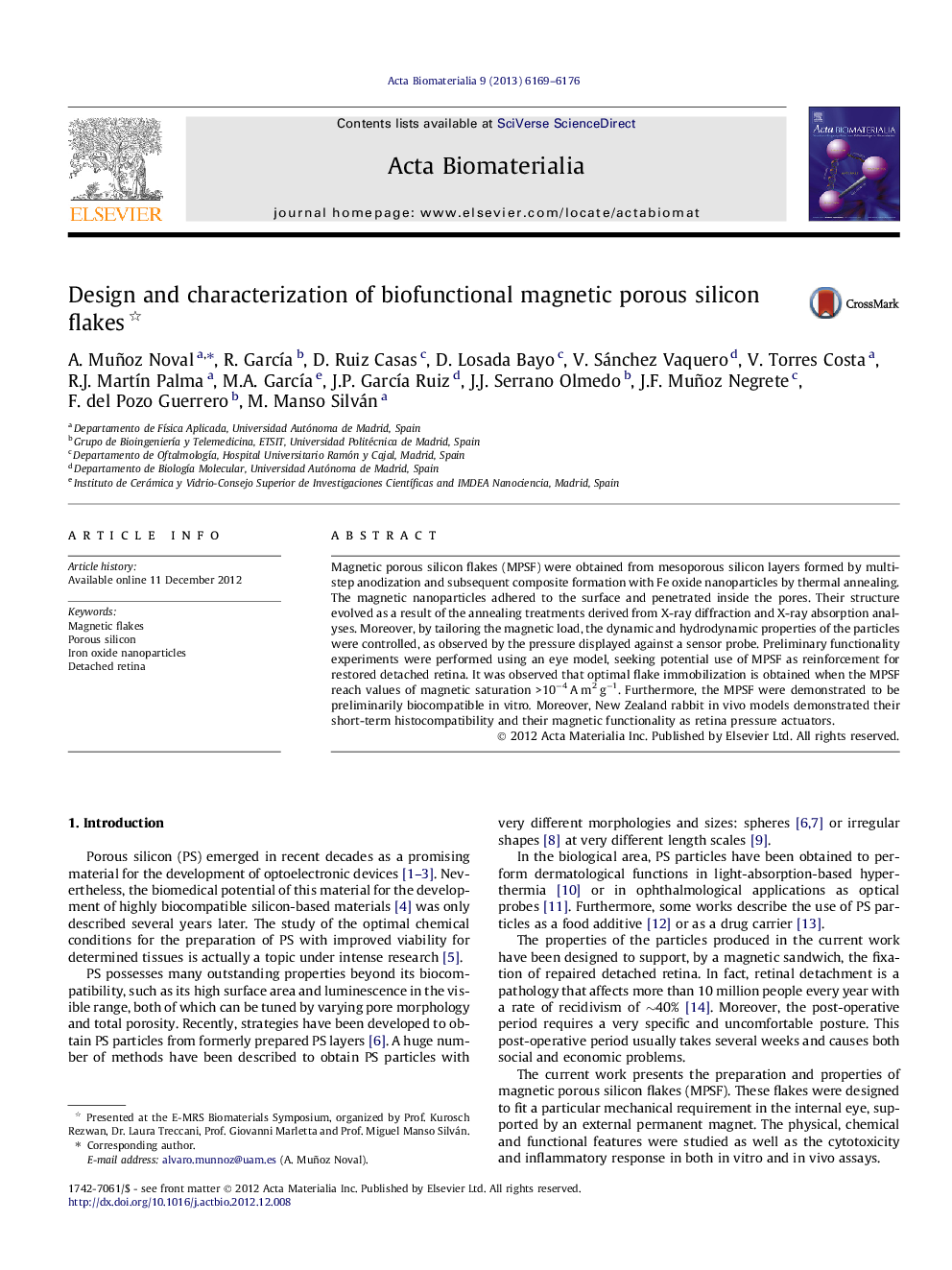| Article ID | Journal | Published Year | Pages | File Type |
|---|---|---|---|---|
| 10159869 | Acta Biomaterialia | 2013 | 8 Pages |
Abstract
Magnetic porous silicon flakes (MPSF) were obtained from mesoporous silicon layers formed by multi-step anodization and subsequent composite formation with Fe oxide nanoparticles by thermal annealing. The magnetic nanoparticles adhered to the surface and penetrated inside the pores. Their structure evolved as a result of the annealing treatments derived from X-ray diffraction and X-ray absorption analyses. Moreover, by tailoring the magnetic load, the dynamic and hydrodynamic properties of the particles were controlled, as observed by the pressure displayed against a sensor probe. Preliminary functionality experiments were performed using an eye model, seeking potential use of MPSF as reinforcement for restored detached retina. It was observed that optimal flake immobilization is obtained when the MPSF reach values of magnetic saturation >10â4Â AÂ m2Â gâ1. Furthermore, the MPSF were demonstrated to be preliminarily biocompatible in vitro. Moreover, New Zealand rabbit in vivo models demonstrated their short-term histocompatibility and their magnetic functionality as retina pressure actuators.
Related Topics
Physical Sciences and Engineering
Chemical Engineering
Bioengineering
Authors
A. Muñoz Noval, R. GarcÃa, D. Ruiz Casas, D. Losada Bayo, V. Sánchez Vaquero, V. Torres Costa, R.J. MartÃn Palma, M.A. GarcÃa, J.P. GarcÃa Ruiz, J.J. Serrano Olmedo, J.F. Muñoz Negrete, F. del Pozo Guerrero, M. Manso Silván,
